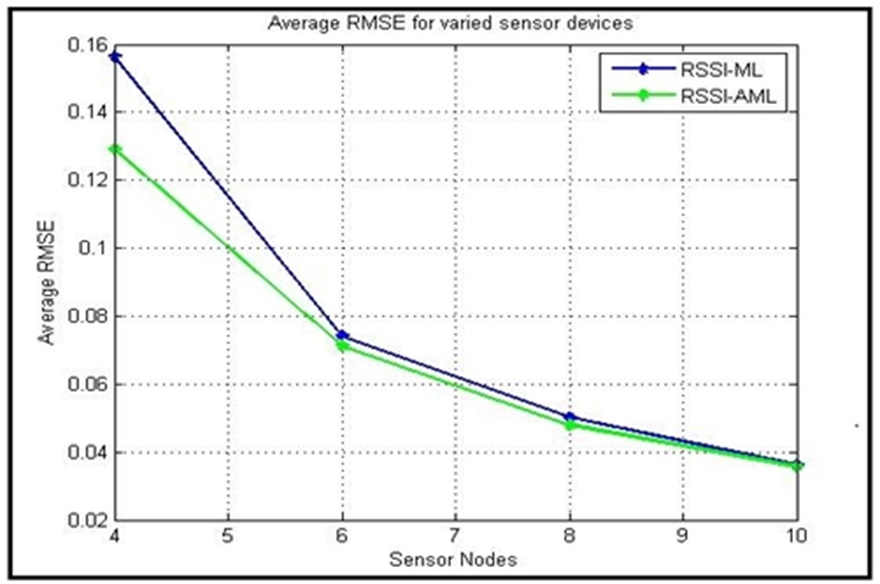Enhancing Location Accuracy by Minimizing RMS Using RSS-AMLE in WSN

DOI:
https://doi.org/10.54060/jieee.2024.99Keywords:
Wireless Sensor Networks, Received Signal Strength , non-convex problem, localization errorsAbstract
Over the past decade, there has been significant growth in wireless sensor networks, particularly in the context of industrial applications. Mobile sensor networks have garnered research interest due to their ability to facilitate communication between various devices. Still, the mobility of these nodes gives rise to challenges such as network coverage and connectivity issues. Addressing these challenges necessitates accurate estimation of sensor node locations, a critical factor in network performance. Numerous methods, such as Angle of Arrival (AOA) and Time of Arrival (TOA), have been proposed for node localization. Still, these methods are plagued by localization errors and high implementation costs. To overcome these localization errors in wireless sensor networks, we present an adaptive approach based on the Received Signal Strength (RSS) model. This model views localization as a non-convex problem and employs an adaptive maximum likelihood estimation to minimize localization errors. An extensive simulation study is carried out to measure the performance of the intended approach in minimizing the localization error. The results unequivocally demonstrate that our localization scheme achieves higher accuracy in locating sensor nodes while reducing deployment costs. Comparative analysis against existing methods further underscores the significance of our approach.
Downloads
References
T. P. MohanKumar, D. Ramesh, “Taxonomy and comparative survey of localization techniques in WSN”. In International conference on advances in engineering and technology-ICAET2023 on 13th April 2023 held at Government Engineering College, KR Pet-Karnataka, India.
Q. Wei, D. Zhong, and J. Han,“Improved localisation method based on multi‐hop distance unbiased estimation,” IET Commun., vol. 8, no. 16, pp. 2797–2804, 2014.
L. Liu and M. E, "Localization for wireless sensor networks by combining TFDA and FMCW," 2010 IEEE International Conference on Mechatronics and Automation, Xi'an, China, 2010, pp. 945-950, doi: 10.1109/ICMA.2010.5588549.
X. Wang and S. Li, “Scalable routing modeling for wireless ad hoc networks by using polychromatic sets,” IEEE Syst. J., vol. 7, no. 1, pp. 50–58, 2013.
A. M. Abbas, “TrustLP: A trust-based localization protocol for wireless sensor networks," in 2015 13th International Symposium on Modeling and Optimization in Mobile, Ad Hoc, and Wireless Networks (WiOpt), vol., no., pp.529-536, 2015.
Z. Yang and Y. Liu, “Quality of Trilateration: Confidence-Based Iterative Localization”,” IEEE Transactions on Parallel and Distributed Systems, vol. 21, pp. 631–640, 2010.
L. Liu, Y. Wei and G. Xiu, "An Adaptive Hybrid Localization Algorithm for Wireless Sensor Network," 2012 Second International Conference on Instrumentation, Measurement, Computer, Communication and Control, Harbin, China, 2012, pp. 1579-1582, doi: 10.1109/IMCCC.2012.368.
Y. Zhang, Y. Chen, and Y. Liu, “Towards unique and anchor-free localization for wireless sensor networks,” Wirel. Pers. Commun., vol. 63, no. 1, pp. 261–278, 2012.

Downloads
Published
How to Cite
CITATION COUNT
Issue
Section
Categories
License
Copyright (c) 2024 Mohankumar T P, Dr. Ramesh D

This work is licensed under a Creative Commons Attribution 4.0 International License.

























